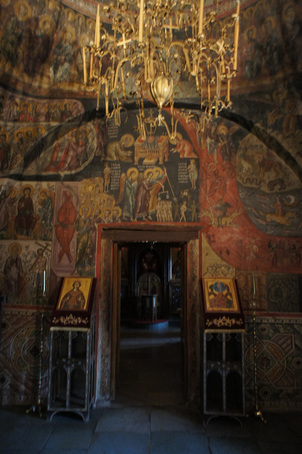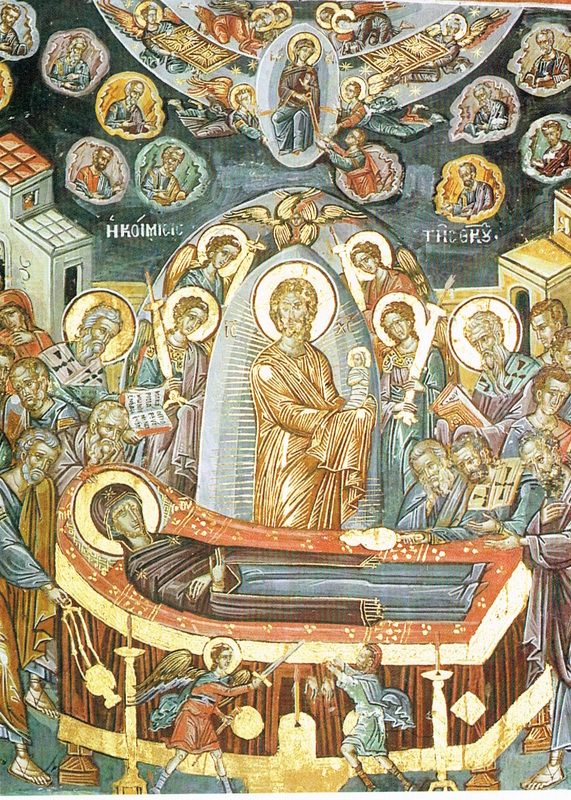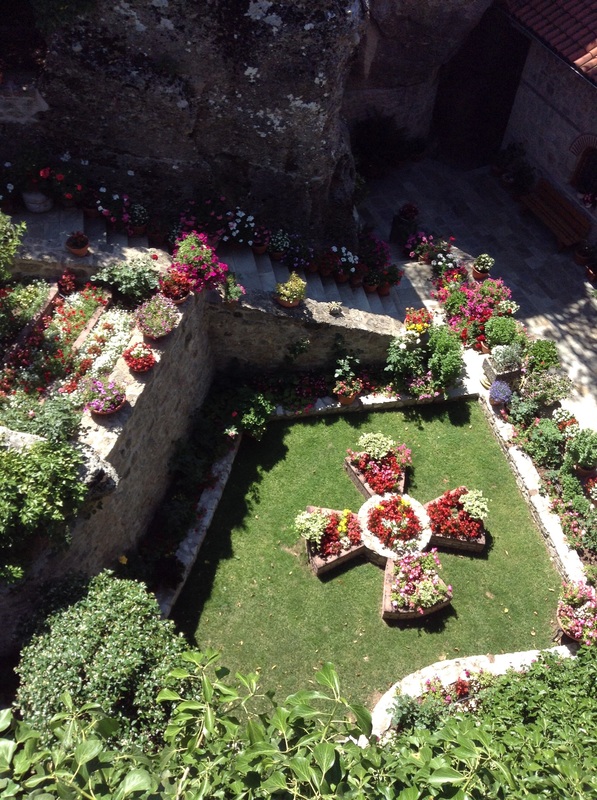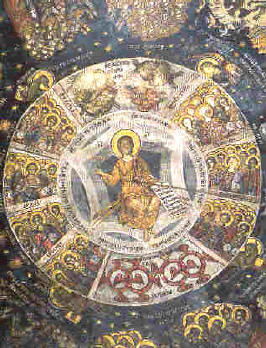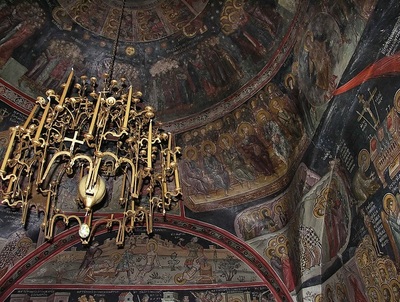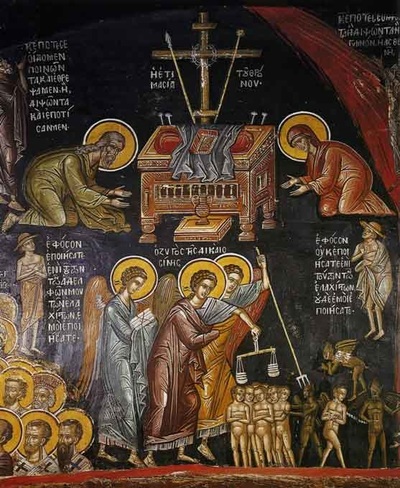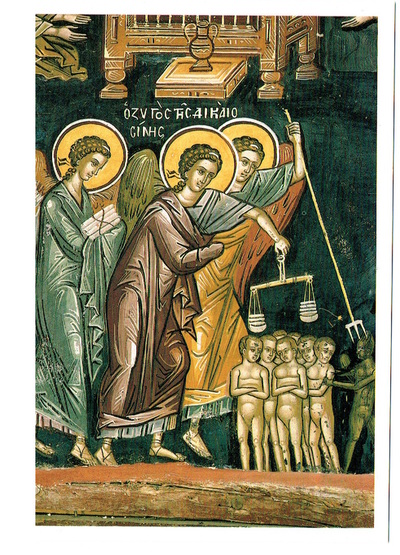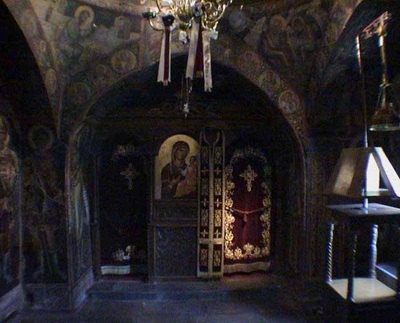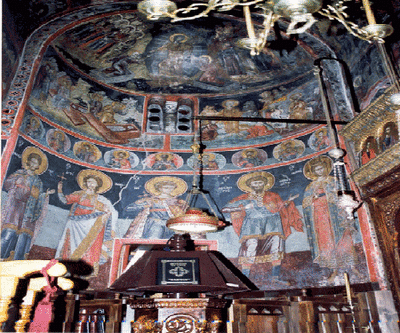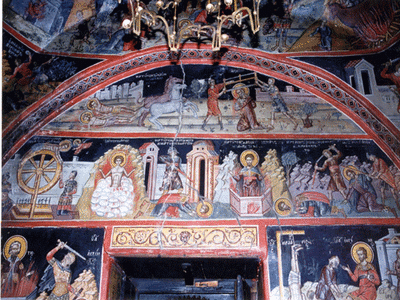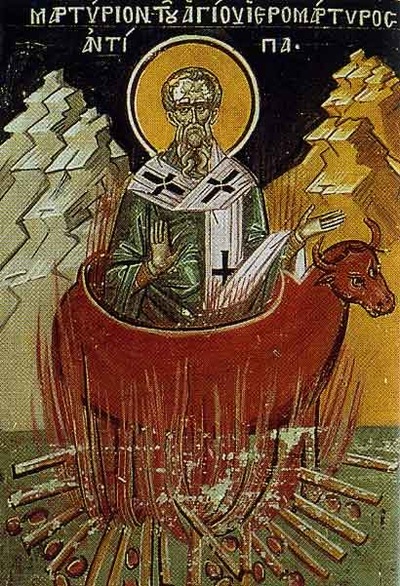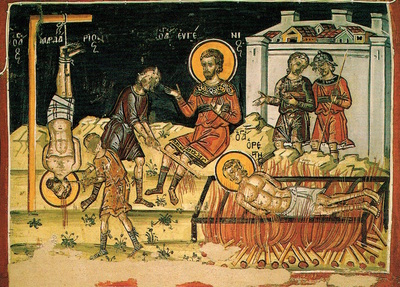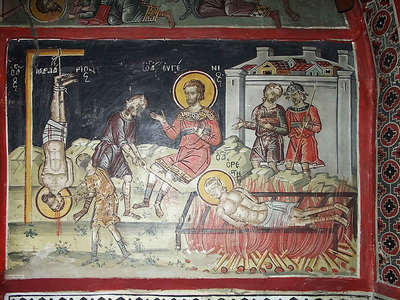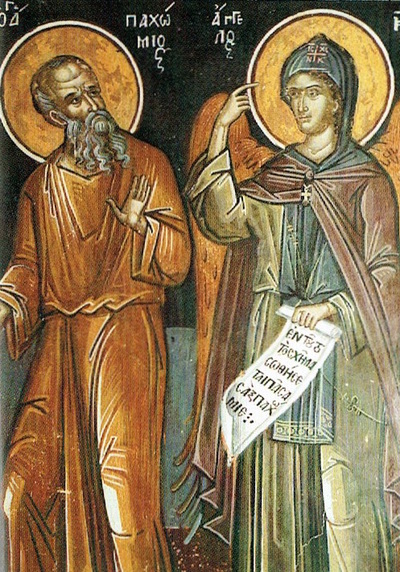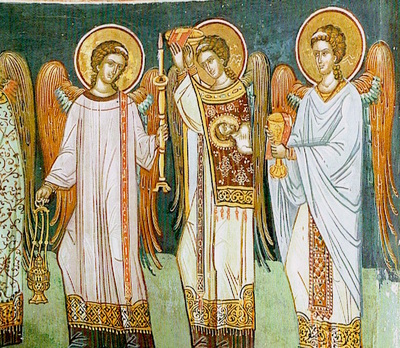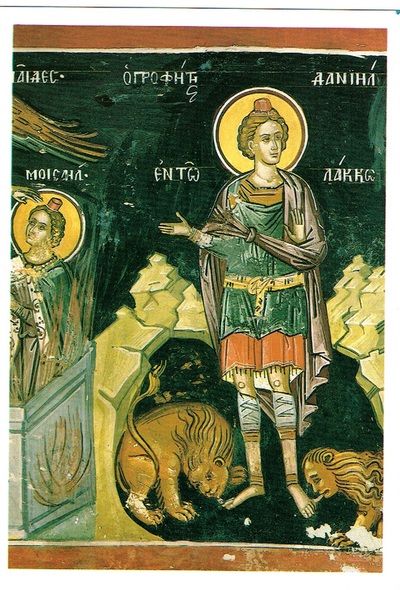Monastery of Roussanou
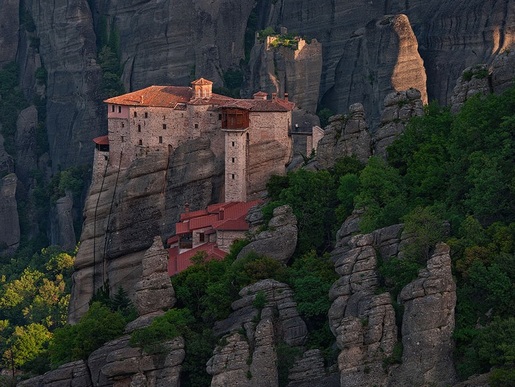 Rousanou at sunrise. (Photo: Mike Reyfman)
Rousanou at sunrise. (Photo: Mike Reyfman)
While the Monastery of Agios Stephanos is grand and magnificent, the small Monastery of Roussanou is intimate. Like Stephanos, it is an active convent and its founding dates back to at least the 16th century. It sits on a very narrow and steep layered rock whose linear furrowed striations tip at an angle of approximately 20º making it seem as if the structures could slide off. Nearly every square foot of the rock top is covered by the buildings, accessible from two stone bridges and a set of steps that meander down a gentle tree-lined path to the bottom which joins a road. Before the 1800's one could reach Roussanou only by rope ladders and in the mid 19th c. monks built a wooden bridge for easier access. The monastery has views of the monasteries of Holy Trinity, Agios Stephanos and Great Meteron. Though there are several myths about the meaning of the name "Roussanou", D.Z. Sofianos, in his book Holy Meteora says that it was probably the name of the first monk who took up residence on the rock.
Roussanou is dedicated to the Transfiguration but it also honors the Great Martyr Barbara: both Feast Days are celebrated (August 6 and December 4). Historical records indicate that the founders were the priest-monk brothers Ioasaph and Maximos, from Ιωάννινα in Epirus. The brothers climbed the rock and constructed buildings and by 1530 they began the Katholikon and by 1560 the decorations were finished. They built on the ruins of an older Katholikon, whose origins are unclear. Sofianos quotes the brothers: "Thus we decided to erect a venerable church and cells and everything that was necessary for the monks, sine we were attracted by the holy monastic way of life which is comparable only to the life of angels...We constructed it from its foundations with great efforts, difficulties and labour. With God's help we built many cells for the monks and visitors to reside as well as many other constructions..we enriched it with books, sacred vestments of deacons and priests and holy vessels. We consecrated vineyards, fields, gardens, mills and monastery dependencies and cattle and horses..." The convent today still vibrates with this spirit of veneration and piety. Though small in size, the monastery, Sofianos writes was often a refuge for families during Turkish raids.
The Katholikon is of Athonite design, with double columns, a cruciform shape with a central cupola and two side niches. There is also a cupola over the Narthex. The church is very small but is richly decorated. We don't know the name of the iconographer but its post-Byzantine style is of the Cretan school. Like Agios Stephanos, there is a large "Second Coming/Last Judgment" fresco (north wall of the narthex). Above the entrance to the Nave is the fresco of the Dormition. Life-size images of Archangels Michael and Gabriel guard each side of the main door and there are several frescos of Christian martyrs and Saints. The paintings of Roussanou have been compared to those of Great Meteoron; that they may have been painted by the same iconographers. They are in remarkable condition given the centuries of occupation and the weather elements from being situated on high peaks.
Roussanou is dedicated to the Transfiguration but it also honors the Great Martyr Barbara: both Feast Days are celebrated (August 6 and December 4). Historical records indicate that the founders were the priest-monk brothers Ioasaph and Maximos, from Ιωάννινα in Epirus. The brothers climbed the rock and constructed buildings and by 1530 they began the Katholikon and by 1560 the decorations were finished. They built on the ruins of an older Katholikon, whose origins are unclear. Sofianos quotes the brothers: "Thus we decided to erect a venerable church and cells and everything that was necessary for the monks, sine we were attracted by the holy monastic way of life which is comparable only to the life of angels...We constructed it from its foundations with great efforts, difficulties and labour. With God's help we built many cells for the monks and visitors to reside as well as many other constructions..we enriched it with books, sacred vestments of deacons and priests and holy vessels. We consecrated vineyards, fields, gardens, mills and monastery dependencies and cattle and horses..." The convent today still vibrates with this spirit of veneration and piety. Though small in size, the monastery, Sofianos writes was often a refuge for families during Turkish raids.
The Katholikon is of Athonite design, with double columns, a cruciform shape with a central cupola and two side niches. There is also a cupola over the Narthex. The church is very small but is richly decorated. We don't know the name of the iconographer but its post-Byzantine style is of the Cretan school. Like Agios Stephanos, there is a large "Second Coming/Last Judgment" fresco (north wall of the narthex). Above the entrance to the Nave is the fresco of the Dormition. Life-size images of Archangels Michael and Gabriel guard each side of the main door and there are several frescos of Christian martyrs and Saints. The paintings of Roussanou have been compared to those of Great Meteoron; that they may have been painted by the same iconographers. They are in remarkable condition given the centuries of occupation and the weather elements from being situated on high peaks.
|
|
